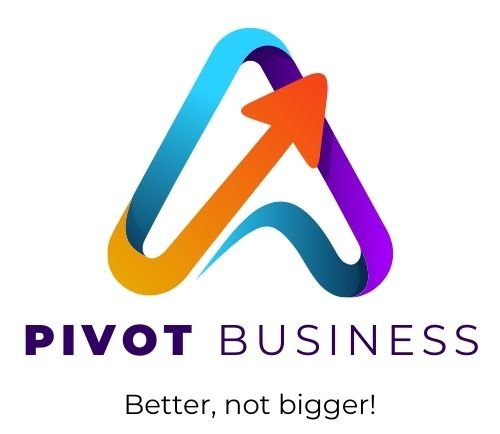Regardless of size, every business faces challenging periods where growth stalls. This period is usually called business saturation where your products/services no longer sell. Small businesses like yours, in particular, are often affected by these challenges that can hinder sales growth and your ability to bounce.
There’s no secret formula that can turn your frustrations into sustainable success overnight, especially when handling a small business encountering stagnations in sales. What you need is solid critical strategies for overcoming them in your business. Yes, we heard you. That’s why Pivot Your Business is here to discuss solutions with you.
What usually causes business stagnation?
Business stagnations can arise due to several factors, often a complex interplay of internal and external ones. Here are some examples:
Internal Causes:
- Complacency: Initial success might develop complacency, resulting in a “business as usual” mentality. Innovation becomes stagnant, and the desire to adapt fades.
- Misaligned Vision and Goals: Your initial vision or goals may become irrelevant or uninteresting. The market may have altered, putting your services in line with customer expectations.
- Operational Inefficiencies: Inefficient processes, obsolete technology, or a lack of communication can all hamper progress. Bottlenecks limit your capacity to scale and satisfy rising demand.
- Defective Pricing or Marketing Strategies: Pricing that is too high or too low, poor marketing campaigns or target pricing are all examples of lousy pricing or marketing strategies.
External Causes:
- Market Saturation: As your market matures, competition increases, making client acquisition more difficult. It is more challenging to stand out and differentiate yourself.
- Economic Downturn: Economic downturns can lower consumer spending and demand for your products.
- Customer Preferences Change: Customer needs and preferences change over time. You risk losing relevance and market share if you do not adjust your offerings.
How do you navigate your way out of business stagnation?
Now that you know the usual causes of business stagnation, you can adapt to these critical strategies to diagnose them. Here are three key strategies to help your small business break through this problem and reach new heights with Pivot Business:
1. Market Analysis and Customer Feedback
 Stagnations are like stubborn weeds in the fertile field of business growth and can. They sprout when customer preferences and market dynamics disappear from what your business once embraced. First, analyse market changes and trends to adapt to the evolving environment. Second, establish a deep connection with customers through feedback, recognising their role as the nurturing soil for growth.
Stagnations are like stubborn weeds in the fertile field of business growth and can. They sprout when customer preferences and market dynamics disappear from what your business once embraced. First, analyse market changes and trends to adapt to the evolving environment. Second, establish a deep connection with customers through feedback, recognising their role as the nurturing soil for growth.
Or, you can simplify things with a business coach to save time and energy while getting out of the problem. You can be engaged in a personalised strategy session where we’ll analyse your business needs and outline a growth plan.
2. Strategic Reassessment through Adaptability and Innovation
Amid stagnation lies an opportunity for reinvention, not a dead end but a crossroad to the next chapter of growth. With a business coach, you can peel back the layers and dissect their current landscape more easily. You will learn to scrutinise your strategies, analyse your positioning, and evaluate your business model.
But introspection alone is not enough. The problem resonates from outside, too. That is why you need help conducting a comprehensive market analysis from experienced people. Once the picture is clear, the real work begins. You can now identify the core value propositions that resonate and the operational strengths that differentiate you.
3. Investment in Marketing and Branding
 Hitting a business stagnation often reveals cracks in the internal foundation. While market shifts and external factors play their part, sometimes the key to propelling your way forward lies not in drastic external changes but in unlocking the hidden potential within your team.
Hitting a business stagnation often reveals cracks in the internal foundation. While market shifts and external factors play their part, sometimes the key to propelling your way forward lies not in drastic external changes but in unlocking the hidden potential within your team.
To successfully chart a new course, learn to understand your employees more and develop leadership programs. The advantage of having a business coach is that you can enhance your decision-making and strategic thinking. You will have an expert who can offer problem-solving training to turn your obstacles into innovation opportunities.
It’s time to realise the impact.
“There are exceptional people out there who are capable of starting epidemics. All you have to do is find them.” – Malcolm Gladwell, The Tipping Point: How Little Things Can Make a Big Difference.
In a business context, the term “tipping point” refers to the critical moment when a business undergoes a significant positive change. The path to renewed success starts with one bold step. This time might be your tipping point. Work with a business coach today, and watch your business peak to its highest.

